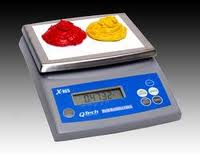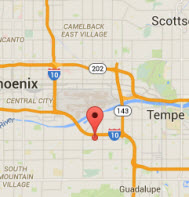Learn How To Screen Print With Catspit Productions, LLC
How To Mix Screen Printing Inks By Weight And Volume
 When you are involved with any type of screen printing it will eventually become necessary to mix inks at particular ratios. Sometimes the mix will determine the color of an ink and other times we are mixing in an activating additive or a catalyst which will affect the inks performance. In these cases the mixture can be very critical. If the mix is off it may cause problems for your finished product. For working with colors we often use our eyes as a gauge in comparison to color charts to estimate a visual quantity to mix. However, being precise in either situation will actually make the job easier and more easily repeatable.
When you are involved with any type of screen printing it will eventually become necessary to mix inks at particular ratios. Sometimes the mix will determine the color of an ink and other times we are mixing in an activating additive or a catalyst which will affect the inks performance. In these cases the mixture can be very critical. If the mix is off it may cause problems for your finished product. For working with colors we often use our eyes as a gauge in comparison to color charts to estimate a visual quantity to mix. However, being precise in either situation will actually make the job easier and more easily repeatable.
When you mix the chemicals used in screen making for screenprinting tee shirts you already use liquid measurements of volume for mixing. You can also use this system for inks. This type of ratio will be seen in different formats. For instance when you need one part substance A mixed with five parts substance B you can see it written out in a sentence such as this. Or you could simply see it denoted as a number ratio like this, 1:5. In both cases a particular measurement of volume is used to represent the "part."
American measurements of volume include:
- teaspoon
- tablespoon = 3 teaspoons
- fluid ounce = 2 tablespoons = 6 teaspoons
- cup = 8 fluid ounces =16 tablespoons
- pint = 2 cups =16 fluid ounces
- quart = 2 pints = 4 cups
- gallon = 4 quarts = 8 pints = 16 cups
The metric system uses liters as follows:
- 1 milliliter = 0.001 liter
- 1 centiliter = 0.01 liter
- 1 deciliter = 0.1 liter
- 1 kiloliter = 1000 liters
- 10 deciliters = 1 liter
It is more likely that ink mixing systems sold by ink vendors will use weight as the measurement for mixing. Here you will need a decent scale big enough hold the quantities of inks you wish to mix. In this case you will use the measurements of weight to detriment how much of each ink or ink additive to mix with each other. This type of mixture ratio is denoted by percentages. For instance an additive will be mixed into an ink base 6% by weight. This means you will want to start with a known quantity of the base to work with; for example 100 grams. To mix 6% of the additive to 100 grams of the ink base you multiply 100 by 6% or .06 in decimal format. Therefore we would add 6 grams of additive to the 100 grams of ink base to achieve a 6% ratio
Common American measurements of weight are as follows:
- ounces
- pounds
The most common metric measurements used are:
- grams
- kilograms
You may also mix inks by formulas in which you simply add certain weights of each color. Pantone inks are often mixed this way. As you can see mixing inks by volume or weight is not as hard as it first appears to be. Taking a little time to prepare and gather your mixing tools before starting to mix will also help make things easier. And remember when it comes to metric to US conversions or anything related to weights or measurements, the internet is full of help. Just Google it like you did to find this article. Chances are you will find what you need.
Here is a link for a great webpage which has tools for all metric conversions to USA or USA to metric. It's a great resource because everything is on one page easily accessible and usable.
Metric/US Conversion Tools Simple
Metric/US Conversion Tools Advanced
Metric conversion tools, © Copyright 2008. French Property, Services and Information Ltd. All Rights Reserved.


 Screenprinting Equipment From Catspit Productions
Screenprinting Equipment From Catspit Productions


